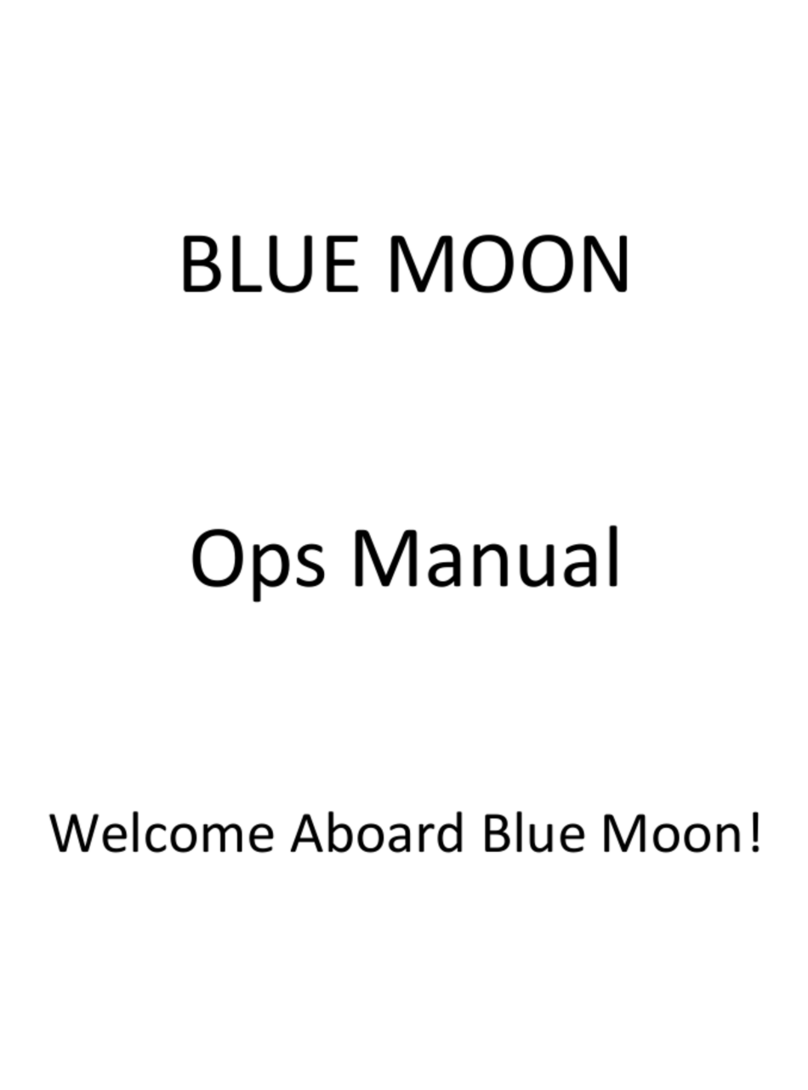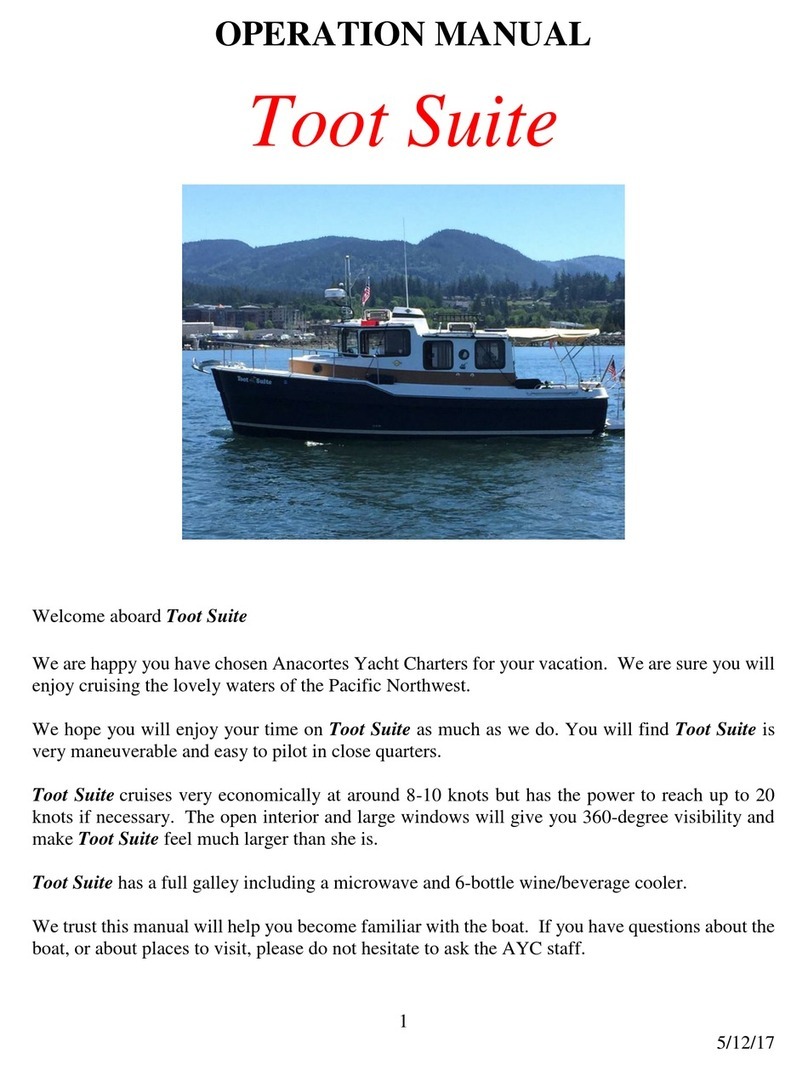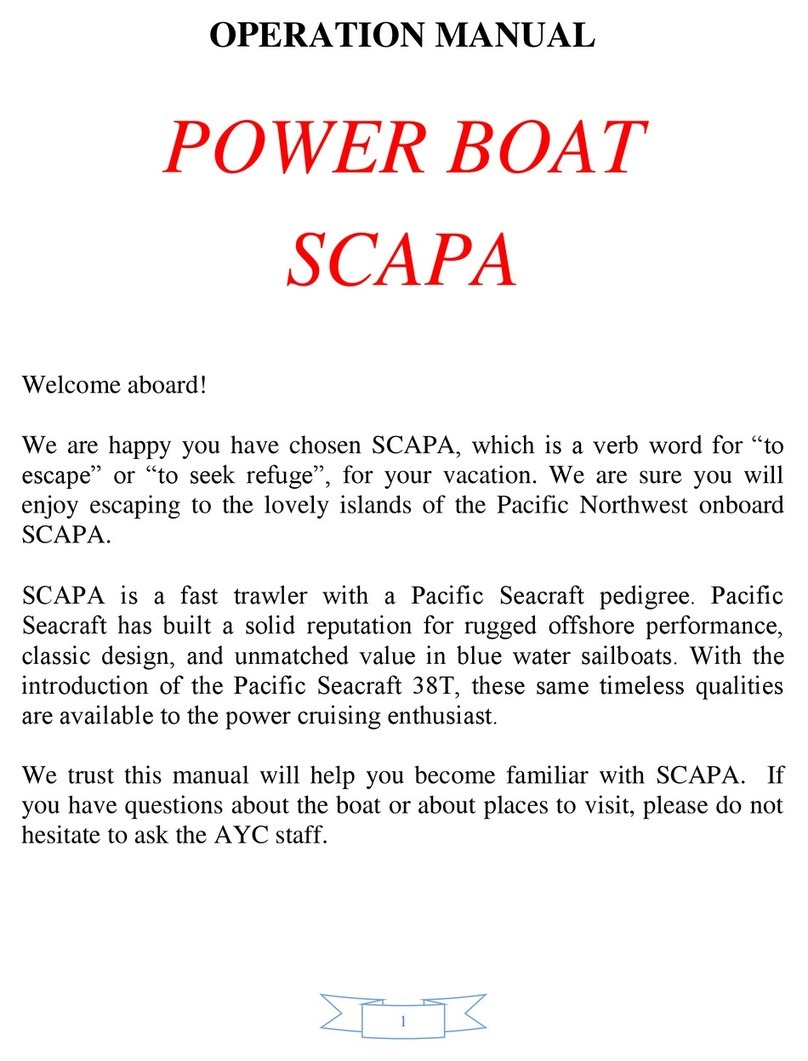The inverter’s power source is the DC house or inverter batteries located in the starboard lazarette. The
quantity of DC power is limited to the capacity of these batteries. Therefore, running hair dryers, toaster,
coffeepot, etc. will quickly discharge the house batteries. Use these items VERY SPARINGLY! Monitor
your battery usage very carefully!
When connected to shore power, the inverter automatically becomes a battery charger for the 12-volt
HOUSE BATTERIES. Should you detect the inverter failing to charge the house batteries, check the circuit
breaker in the AC Panel and the inverter control panel. Also, there is usually a circuit breaker located on top
of the inverter box.
Generator
To start your GENERATOR, first check that the generator’s fluids are topped off and the raw water intake is
open. The generator controls are located in the electrical panel and on the generator. First pre-heat the
generator for about 20 seconds. Then, while still pre-heating, turn the switch to start. Hold the switch in that
position while the generator catches (about 5-10 seconds); if the generator does not start on the second
attempt, allow the starter to cool for about 1 minute. Water and exhaust will exit under the stern of the boat.
Allow the generator to warm up for 2 minutes. Turn the AC distribution switch to Generator (or ship). Then
turn on AC systems as you would on shore power, one system at a time.
To turn the generator off, first take off the load by turning off AC breakers. Then turn off main AC
distribution switch. Lastly kill the generator by switching generator switch to “off”until it dies.
12-Volt DC Systems (House)
There is one 4-battery battery-bank that supports 12-volt DC power.
The BATTERY SWITCHES PANEL is located in the most aft port salon cabinet. Normally leave the
ENGINE/GENERATOR and HOUSE SWITCHES in the ‘ON’ position. Note -- Do not change the
position of the switches while the engines are running, or the alternator diodes will be damaged. Change
positions with the engines off.
The 12-volt panel shows all the systems supported by the batteries. Primarily you will be turning on the
breakers for your lights, water pressure, electronics, etc. Bilge pumps should always be left on. The
breakers for high draw items should always be turned off after every use.
House Battery Bank & Switch
The HOUSE BATTERY BANK provides power for all DC systems, except the engines and 3 automatic
bilge pumps. When disconnected from shore power, all 12-volt devices drain the house battery. Use devices
as needed. The DC volt meter on the DC panel can be switched between Port, Starboard, and House Battery
Bank to measure charging or resting battery voltages.
When the battery bank is being charged, the voltage will read from about 13.1 volts to 14.4 volts depending
upon state-of-charge of the battery bank. When the battery bank is at rest (that is, not being charged), the
volt meter can give a rough indication of the state-of-charge of the battery bank.
All batteries are charged by the engine ALTERNATORS while underway. The engine/house batteries are
charged by the BATTERY CHARGERS when connected to shore power. Ensure the Battery Charger and
Inverter Circuit Breakers at the electrical panel are ON. The GENERATOR will also charge the batteries.



































